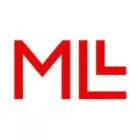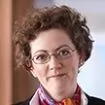This article first appeared in JusLetter
In its decision of 21 April 2010, the Swiss Competition Commission prohibited the planned merger between Sunrise Communications AG and Orange Communications SA. This was the second time only that the Competition Commission has refused to allow a notified merger and the first time that such decision has become effective. The present review contains a summarised translation of the Competition Commission's detailed reasoning, followed by a short assessment of the decision and its effects.
1 INTRODUCTORY REMARKS
1.1 The Planned Merger Undertaking: Parties, Reasons and Structure
On 26 November 2009, the Swiss Competition Commission (Competition Commission) received a notification pursuant to Art. 9 para 1 of the Federal Act on Cartel Law and Other Restraints of Competition (Cartel Act) regarding a concentration of undertakings. According to the notification, France Télécom SA (France Télécom) intended to acquire Sunrise Communications AG (Sunrise; together the Merging Parties). Sunrise and Orange Communications SA (Orange) would then have been merged (the Merged Company).
1.1.1 France Télécom Group and Orange
France Télécom Group (FT Group) provides a broad range of telecommunication services to private and business customers and to very large companies. FT Group's main areas of business are fixed line voice telephony, leased circuits, data transfer, internet, TV broadcasting and information services.
The FT Group operates the network of its (wholly owned) subsidiary Orange in Switzerland, sells and distributes Orange products in Switzerland and abroad, and provides – through Orange – a broad range of mobile telecommunication services to private and business customers. Orange's fixed line telephony and internet activities are marginal. Through its wholly owned subsidiary Orange Network SA, Orange has a GSM- and UMTS-licence and runs its own infrastructure for mobile telecommunication. Orange is FT Group's only brand for internet, TV and mobile telecommunication services. By acquiring Sunrise, the FT Group aimed at strengthening its presence in the Swiss mobile telecommunication market and entering the fixed line market.
1.1.2 Tele Danmark Communications A/S and Sunrise
Tele Denmark Communications A/S (TDC) is the leading service provider of telecommunication services in Denmark, active also in the whole Scandinavian market and, via a minority participation, in Hungary. TDC owns 100% of Sunrise. Sunrise operates telecommunication networks (fixed line as well as mobile telecommunication) and provides further services regarding data transfer and internet (broadband and dial-up) to private and business customers in and from Switzerland.
1.1.3 Reasons for the Planned Merger
The Merging Parties mentioned various reasons for their planned merger undertaking (the Undertaking). They claimed to be active in a market dominated by Swisscom (Switzerland) AG (Swisscom), the former public PTT Telecom's successor, who enjoys a much larger market share than any other telecommunications provider in Switzerland. Swisscom had inherited a comprehensive fixed network including a nationwide backbone and an extensive local loop. The Merging Parties identified Swisscom's mobile telecommunication experience, gained prior to Diax/Sunrise and Orange receiving a GSM licence in 1999, as another competitive advantage. Thus, Swisscom was considered to have been able to focus on keeping and expanding its customer basis and infrastructure, while Orange and Sunrise had to invest substantially to establish their own networks, customer basis and capable team.
The Merging Parties further claimed that, as of today, Swisscom enjoys better UMTS coverage1, since Orange and Sunrise lacked the financial means to keep up with Swisscom in terms of infrastructure. This situation will be further exacerbated by the forthcoming (and costly) introduction of the next mobile telecommunication generation LTE (Long Term Evolution).
The Merging Parties argued that Swisscom tried to hinder its competitors by (i) exacerbating and delaying interconnection negotiations and setting unreasonable interconnection requirements, (ii) impeding unbundled access to their local loop and (iii) abusing its dominant position on the mobile telecommunications market.2
The main rationale for the Undertaking was presented as follows:
(a) By way of using synergies3, increasing economies of scale and creating added value, the Merging Parties claimed they would strengthen their position in the Swiss telecommunication market and vis-à-vis Swisscom in particular. Swiss customers and other market participants would benefit from increased efficiency, innovative and competitive products and services and, in general, a competitive market environment. Furthermore, combining the complementary business areas would improve a by then further diversified portfolio. The Merged Company would become both a strong number two in the Swiss telecommunication market (with a mobile telecommunication market share of 40 %) and potentially the leading alternative fixed line/DSL-operator (with a market share of 13 % in the broadband market). Profitability, efficiency and an increased common purchasing and sourcing policy would be furthered due to significant cost savings. Ultimately, customers would benefit from the increased competitiveness on the Swiss market.
(b) The range of products, network coverage4 and customer experience would be improved, better hand sets offered and convergent offers made. The Merged Company would also be in a position to increase and improve its distribution network nationwide: while Orange and Sunrise operate around 80 sales agencies each, Swisscom has around 170.
(c) From a strategic point of view, combining complimentary activities would on the one hand lead to Orange benefitting from Sunrise's growing customer basis and experience in the fixed line market. On the other hand, Sunrise would benefit from Orange's financially strong and technically skilled parent company and FT Group's innovative and compatible product portfolio. Fusing the networks would, by the same token, facilitate sharing forthcoming investments and reduce operative costs in general.5 This was considered all the more important by the Merging Parties as the standards for the fourth mobile telecommunication generation (LTE), which will replace the GSM and UMTS standards, are already available.6
1.2 Obligation to Notify the Planned Merger
The Undertaking was to consist of a main (share purchase) as well as an ancillary (non-competition clause) element. The FT Group and TDC notified the Competition Commission that they had (i) signed a binding agreement, (ii) negotiated the draft of a shareholders agreement and (iii) prepared a term sheet featuring the main rules for the Undertaking. Signing of the final version of the share purchase agreement was planned to take place on or before 15 February 2010. The FT Group and TDC had agreed that the latter's wholly owned subsidiary Sunrise was to be sold to the FT Group and then merged into Orange. Upon such merger, the FT Group would have held 75% and TDC 25% of the shares in the Merged Company.7
In respect of the non-competition clause, the parties to the shareholders agreement had agreed not to compete with the business of the Plus Group in Switzerland for a period of 0-3 years8. The Competition Commission reconfirmed its 2006 ISS/Edelweissfm decision according to which non-competition clauses may be legitimate in merger situations for a maximum of two or three years only9. The Merging Parties claimed that the non-competition clause would enable the FT Group to protect the full value of the purchased assets, including customer basis and know-how (technical aspects and distribution). As a consequence, the Competition Commission concluded that the envisaged non-competition clause in favour of the Merged Company was covered by the concentration privilege.
Notification of a concentration of undertakings is required if (i) in the last accounting period prior to the concentration, the companies concerned reported a joint worldwide turnover of at least CHF 2bn or turnover in Switzerland of at least CHF 500m and (ii) at least two of the companies concerned reported individual turnover in Switzerland of at least CHF 100m (Art. 9 para 1 lit. b Cartel Act). The worldwide turnover of the FT Group (including Orange) was CHF 79,429m in 2008. In Switzerland, FT Group's turnover (including Orange) was CHF 1,308m in 2008. Sunrise's worldwide turnover in 2008 was CHF 1,856m. All of its turnover was generated in Switzerland. Therefore, the thresholds were reached. The Competition Commission further noted that no other provisions of law as per Art. 3 para 1 Cartel Act were applicable10 and that the Undertaking had to be notified.
1.3 The Proceedings
Following preliminary investigations with the Merging Parties, various providers of telecommunication services and the Federal Office of Communication (BAKOM), the Competition Commission informed the Merging Parties on 28 December 2009 that it had decided to conduct an investigation of the Undertaking pursuant to Art. 33 Cartel Act. In the course of such investigation, Swiss and foreign providers of telecommunication services as well as the BAKOM were further interviewed. On 28 January 2010, various consumer protection organisations submitted their representations against the Undertaking.11 Following further investigations, discussions and hearings with the Merging Parties, Swisscom, the Federal Communications Commission and the aforementioned consumer protection organisations, the Competition Commission decided on 19 April 2010 not to allow the Undertaking. Such decision was communicated to the Merging Parties on 21 April 2010, thus within the deadline of 29 April 2010 pursuant to Art. 20 para 1 and para 3 of the Ordinance on the Control of Concentrations of Untertakings (Merger Control Ordinance).
To read this article in its entirety please click here.
Footnotes
1 See the maps regarding coverage of Swisscom, Orange and Sunrise: http://maps.sunrise.ch/coverage.php ; ww1.orange.ch/residential_support_coverage_swiss-coverage.html; www.swisscom.ch/res/beratungservice/infrastruktur/mobilnetz/index.htm (last updated on 14 December 2009).
2 The fast pace of development in telecommunications technology (e.g. UMTS, glass fibres, IP-TV) were also mentioned.
3 The Merging Parties envisaged significant synergies in different areas such as IT, G&A and marketing.
4 In particular with a view to the second and third generations of mobile telecommunications.
5 Around 25 % of the existing aerials could be taken out of service. With regard to the costs associated with operating the network, cost savings of up to 60 % were anticipated. Further synergy potential was identified in marketing, customer service, operations, etc.
6 The Merging Parties expect these investments to be necessary already within the next two to five years.
7 Further details as to the shareholding quota and aspects of the Merged Company's decision making process were notified but are subject to restrictions on the disclosure of business secrets.
8 The exact time frame is subject to restrictions on the disclosure of business secrets.
9 ISS/Edelweissfm, Law and Policy on Competition (LPC) 2006/4, p 689, recital 38. The concentration privilege is to be approved for two years if the value of a business is transferred, three years if know-how is also transferred.
10 See the decision termination mobile telecommunication, LPC 2007/2, pp 250ss, recital 48ss, and mobile telecommunication market LPC 2002/1, p 109ss, recital 54ss.
11 The consumer protection organisations were asci, FRC and Konsumentenschutz.
The content of this article is intended to provide a general guide to the subject matter. Specialist advice should be sought about your specific circumstances.

